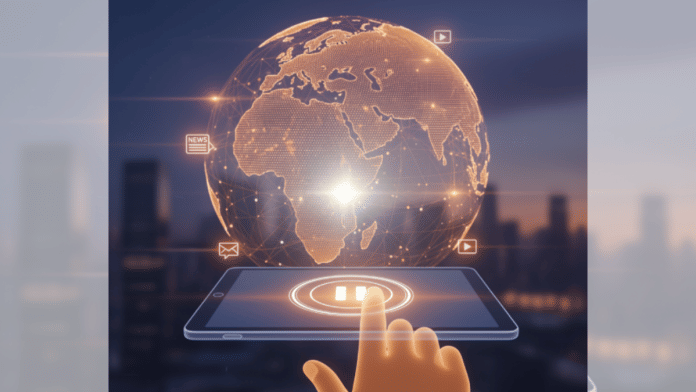Thank you dear subscribers, we are overwhelmed with your response.
Your Turn is a unique section from ThePrint featuring points of view from its subscribers. If you are a subscriber, have a point of view, please send it to us. If not, do subscribe here: https://theprint.in/
In today’s world, we carry entire libraries, newsrooms, and classrooms in our pockets. With a single swipe, headlines, videos, and viral posts compete for our attention. But true digital literacy is not about how quickly we can scroll or how many apps we can juggle at once. It is about something deeper: knowing what deserves our trust, what needs to be questioned, and what should never be shared further without thought.
Think about the last time you received a forwarded message on WhatsApp. Perhaps it was a miracle health remedy, a dramatic piece of “breaking news”, or even a photo claiming to show an event happening in real time. Did you pause before passing it along? Did you check if it was true? For many, the reflex is to forward instantly, sometimes to dozens of contacts, without a moment’s reflection. This is where digital literacy begins: in the pause!
More Than Just Tech Savvy:
Often, digital literacy is confused with technical ability. If you know how to operate a laptop, download an app, or post a picture on Instagram, you are considered “digitally literate”. But literacy in its truest sense is about comprehension, not just mechanics. Just as reading a sentence does not mean understanding the story, scrolling through feeds does not mean grasping what is reliable or important.
Real digital literacy asks us to go a step further: to question the origin of a message, to notice whether an image looks altered, to recognize when a headline is designed to provoke emotion rather than inform. It is less about the fingers tapping on a screen and more about the mind behind them.
A Story of Two Friends:
Consider this simple scenario. Two friends, let’s call them Meera and Rohan, both receive a viral message claiming a school holiday the next day. Meera quickly shares it with her parents’ group and neighbors. Rohan, meanwhile, spends two minutes checking the school’s official website and calls the helpline listed. He discovers the holiday news is fake. The difference between the two is not education level, age, or access to the internet. It is digital literacy.
Meera’s action spreads confusion; Rohan’s pause prevents it. That pause, sometimes just a matter of seconds, can decide whether information becomes a tool for clarity or chaos.
The Responsibility of Sharing:
We often talk about freedom of speech, but rarely about the responsibility of speech. In the digital space, every user is both consumer and distributor. A forwarded video from one person can travel through hundreds of phones in hours. This power means each of us has become a micro-publisher, shaping narratives in our own circles.
With such influence comes responsibility. Before sharing, ask three simple questions:
- Source – Where did this come from?
- Verification – Has this been reported by a reliable platform or official account?
- Impact – Could this create unnecessary panic, harm, or misunderstanding?
If any of these answers are unclear, the best decision may be not to share at all. Silence, in this context, is wiser than amplification.
Building a Culture of Conscious Digital Use:
Digital literacy cannot be taught by a single workshop or campaign. It is a culture that must be built in homes, schools, offices, and communities. Parents can model mindful sharing habits for children. Schools can teach students how to differentiate between credible websites and sensational ones. Workplaces can encourage employees to verify messages before posting on internal groups.
Even small practices like, using fact-checking websites, noticing the publication date of an article, or reverse-searching an image, can gradually build stronger habits. These may feel like minor acts, but collectively, they can reduce the wildfire spread of misinformation.
Why It Matters Now:
The digital age is not slowing down. Artificial intelligence can now generate voices and videos that look alarmingly real. News breaks on social media before it reaches traditional channels. In such an environment, the line between real and fabricated becomes thinner each day. If we, as users, are not equipped with the skill to discern, we risk becoming not just consumers of misinformation but active participants in its spread.
From Passive to Active Users:
At its heart, digital literacy is about moving from passivity to agency. Instead of letting the scroll dictate what we believe, we choose to investigate. Instead of sharing out of impulse, we share with intention. It transforms us from passive recipients into responsible digital citizens.
The internet has given us unparalleled access to knowledge. But knowledge without judgment can mislead. What we need today is not just faster fingers but sharper minds, minds that know when to trust, when to doubt, and when to simply pause!
Anjali Akolkar has authored a research paper and writes op-eds on social and cultural issues.
These pieces are being published as they have been received – they have not been edited/fact-checked by ThePrint.


